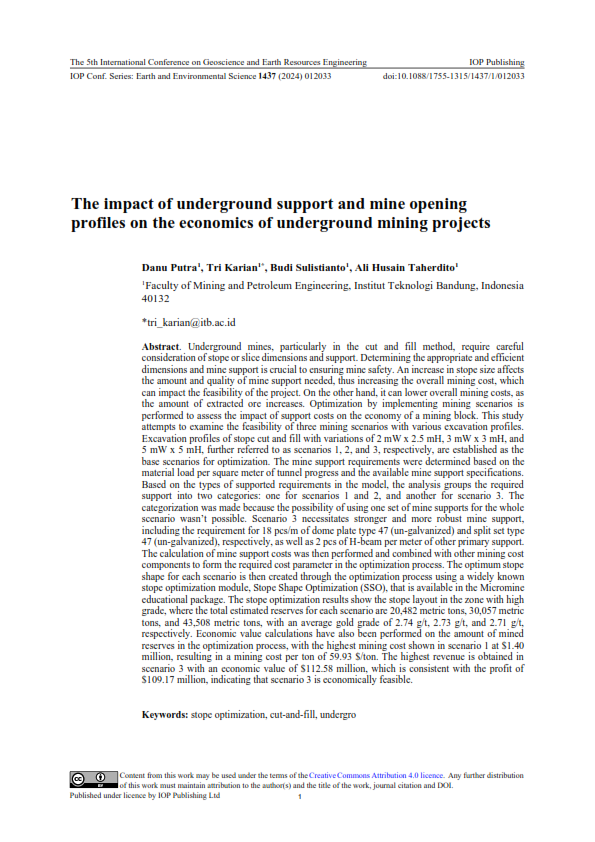
Underground mines, particularly in the cut and fill method, require careful consideration of stope or slice dimensions and support. Determining the appropriate and efficient dimensions and mine support is crucial to ensuring mine safety. An increase in stope size affects the amount and quality of mine support needed, thus increasing the overall mining cost, which can impact the feasibility of the project. On the other hand, it can lower overall mining costs, as the amount of extracted ore increases. Optimization by implementing mining scenarios is performed to assess the impact of support costs on the economy of a mining block. This study attempts to examine the feasibility of three mining scenarios with various excavation profiles. Excavation profiles of stope cut and fill with variations of 2 mW x 2.5 mH, 3 mW x 3 mH, and 5 mW x 5 mH, further referred to as scenarios 1, 2, and 3, respectively, are established as the base scenarios for optimization. The mine support requirements were determined based on the material load per square meter of tunnel progress and the available mine support specifications. Based on the types of supported requirements in the model, the analysis groups the required support into two categories: one for scenarios 1 and 2, and another for scenario 3. The categorization was made because the possibility of using one set of mine supports for the whole scenario wasn’t possible. Scenario 3 necessitates stronger and more robust mine support, including the requirement for 18 pcs/m of dome plate type 47 (un-galvanized) and split set type 47 (un-galvanized), respectively, as well as 2 pcs of H-beam per meter of other primary support. The calculation of mine support costs was then performed and combined with other mining cost components to form the required cost parameter in the optimization process. The optimum stope shape for each scenario is then created through the optimization process using a widely known stope optimization module, Stope Shape Optimization (SSO), that is available in the Micromine educational package. The stope optimization results show the stope layout in the zone with high grade, where the total estimated reserves for each scenario are 20,482 metric tons, 30,057 metric tons, and 43,508 metric tons, with an average gold grade of 2.74 g/t, 2.73 g/t, and 2.71 g/t, respectively. Economic value calculations have also been performed on the amount of mined reserves in the optimization process, with the highest mining cost shown in scenario 1 at $1.40 million, resulting in a mining cost per ton of 59.93 $/ton. The highest revenue is obtained in scenario 3 with an economic value of $112.58 million, which is consistent with the profit of $109.17 million, indicating that scenario 3 is economically feasible.

Oleh :
Danu Putra